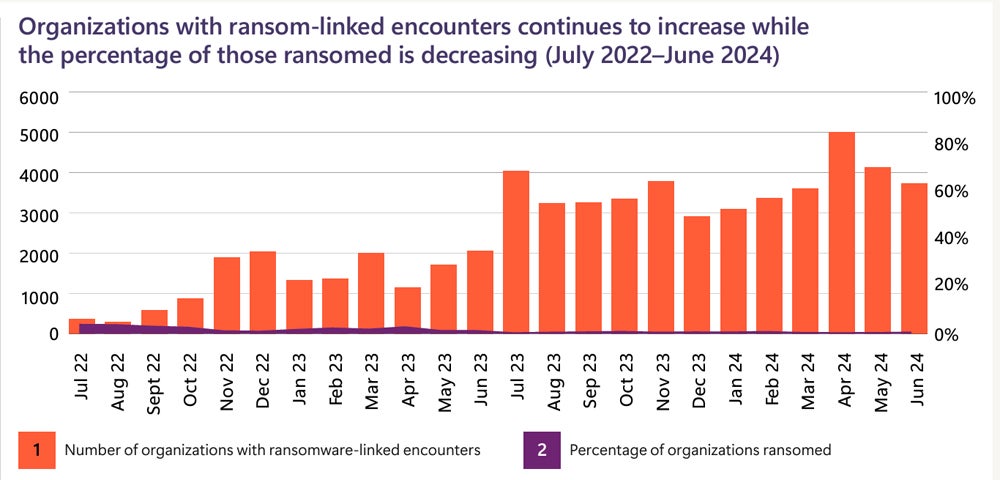The Rise of Ransomware Attacks: Insights from Microsoft’s Digital Defense Report
The world of cybersecurity is a battleground, with cybercriminals launching a staggering 600 million attacks daily on Microsoft customers. However, despite the alarming increase in ransomware attempts, the good news is that advancements in automatic attack disruption technologies have resulted in a significant decrease in successful attacks involving data encryption and ransom demands.
In a recent report released by Microsoft on October 15, the company highlighted the growing trend of ransomware attacks globally. The top five ransomware families, including Akira, Lockbit, Play, Blackcat, and Basta, accounted for 51% of documented attacks. While the numbers are concerning, the report also indicated a three-fold drop in successful attacks reaching the encryption stage.

Significant attack types include deepfakes, e-commerce theft
Microsoft’s report sheds light on the various attack vectors used by cybercriminals, ranging from social engineering to exploiting vulnerabilities in public-facing applications and unpatched operating systems. Remote encryption and targeting unmanaged devices were prevalent tactics in successful attacks. Additionally, infrastructure attacks, cyber-enabled financial fraud, and deepfakes were among the major types of attacks identified.
Antivirus tampering was also a significant concern, with over 176,000 incidents involving tampering with security settings detected by Microsoft Defender XDR in 2024.
Nation-state, financially motivated actors share tactics
Microsoft highlighted the convergence of tactics between financially-motivated threat actors and nation-state actors. The report revealed that these threat actors are increasingly using the same information stealers and command-and-control frameworks. The report also underlined the rise of cloud identity compromise attacks among financially-motivated actors.
According to Tom Burt, Microsoft’s corporate vice president of customer security and trust, there is a growing connection between nation-state activities and financially motivated cybercrime. He emphasized the need for effective deterrence against cyberattacks and collaboration between industry and governments to combat these threats.
Both attackers and defenders use generative AI
Generative AI has introduced new challenges in cybersecurity, with both attackers and defenders leveraging AI tools. Nation-state actors are now capable of generating deceptive audio and video content using AI, leading to new threats like AI spear phishing and deepfakes. Microsoft stressed the importance of implementing AI policies and principles to mitigate risks associated with AI tools.
How organizations can prevent common cyberattacks
Microsoft’s report provides actionable insights for organizations to prevent cyberattacks, including disrupting attacks at the technique layer, using secure-by-default settings, implementing multi-factor authentication, and classifying sensitive data. The company’s Secure Future Initiative aims to bolster cybersecurity measures following recent cybersecurity incidents.


